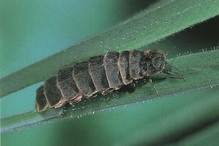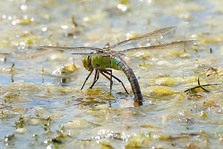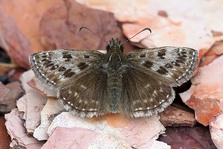

Biodiversity
Action
Plan
Invertebrates are an important component of biodiversity, often overlooked but of great interest. Making up around seven out of every ten species overall, they pollinate our flowering plants, help create good soil by breaking down plant and animal waste material, and act as food themselves for birds and animals.
However, invertebrates are declining in response to widespread habitat loss and fragmentation, changing agricultural and land management practices, development pressure, environmental pollution, non-native invasive species and many other factors.
One of the important first steps considering development and changes in land use is to ask what features of the site support invertebrates and what invertebrates are likely to be there. Brownfield sites may be havens for invertebrates.
It is not possible in this biodiversity plan to deal with all the groups of invertebrate, however we intend to have sections on butterflies, moths, and dragon / damselflies. In addition, two invertebrates are highlighted as priority species: Glowworm and White-Clawed Crayfish.
Butterflies. Over 30 species of butterfly have been recorded in Barnsley.
Sites considered to be a priority for conservation for butterflies include
- Sites with an assemblage of 10 or more butterfly species
- Sites with a population of a priority species. In Barnsley, these are: Dingy Skipper, Small Heath, Wall Brown, White-letter Hairstreak, Small Blue.
Moths. Sites considered to be a priority for conservation for moths include
- Sites with an assemblage of 25 or more moth species
- Sites with a population of a priority species of moth. In Barnsley, these are: Argent and Sable, Brindled Ochre, Buff Ermine, Dark-barred Twin-spot Carpet, Ghost Moth, Small Phoenix, Green-brindled Crescent, Grey Dagger, Heath Rustic, Knot Grass, Lesser-spotted Pinion. [To be confirmed]
Dragon Flies and Damselflies. Sites considered to be a priority for conservation for dragon or damselflies include sites with an assemblage of 8 or more species.
Emperor Dragonfly, Migrant Hawker, Black-tailed Skimmer, Red-eyed Damselfly, Small Red-eyed Damselfly are considered important in Yorkshire. Common Hawker, Black Darter and Emerald Damselfly are decreasing nationally.
Invertebrates Matter
Buglife has produced some ‘best practice guidance’ for planners, developers and communities on
- when a site may be valuable for invertebrates
- the type of survey needed
- the best way to avoid or mitigate the impacts of development on invertebrates
- how sites can be enhanced and managed so that invertebrates thrive.
Buglife: Best practice planning
Natural England's Organising Surveys to determine site quality for invertebrates, although dated, is still useful. [Link]
Pantheon: an online tool to analyse and help with site evaluation for invertebrates.
Pantheon has c13,000 species of invertebrate with ecological requirements. It has beetles, flies, true bugs, moths, bees and many more.
A list of invertebrates found on a site is entered into Pantheon, which then attaches associated habitats, resources and conservation status.
In this way the site’s value can be judged.
Pantheon is a database tool developed by Natural England and the Centre for Ecology & Hydrology. Pantheon


